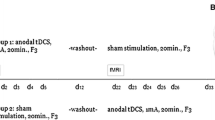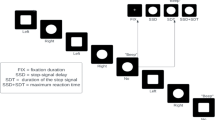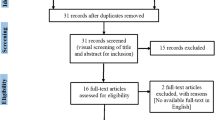Abstract
Anodal transcranial direct current stimulation (tDCS) of the prefrontal cortex has been repeatedly shown to improve working memory (WM). Since patients with attention deficit hyperactivity disorder (ADHD) are characterized by both underactivation of the prefrontal cortex and deficits in WM, the modulation of prefrontal activity with tDCS in ADHD patients may increase their WM performance as well as improve the activation and connectivity of the WM network. In the present study, this hypothesis was tested using a double-blind sham-controlled experimental design. After randomization, sixteen adolescents with ADHD underwent either anodal tDCS over the left dorsolateral prefrontal cortex (DLPFC, 1 mA, 20 min) or sham stimulation with simultaneous fMRI during n-back WM task. Both in one-back and two-back conditions, tDCS led to a greater activation (compared with sham stimulation) of the left DLPFC (under the electrode), left premotor cortex, left supplementary motor cortex, and precuneus. The effects of tDCS were long-lasting and influenced resting state functional connectivity even 20 min after the stimulation, with patterns of strengthened DLPFC connectivity after tDCS outlining the WM network. In summary, anodal tDCS caused increased neuronal activation and connectivity, not only in the brain area under the stimulating electrode (i.e. left DLPFC) but also in other, more remote brain regions. Because of moderate behavioral effects of tDCS, the significance of this technique for ADHD treatment has to be investigated in further studies.






Similar content being viewed by others
References
American Psychiatric Association (1994) Diagnostic and statistical manual of mental disorders, 4 edn. American Psychiatric Association, Washington
Antal A, Polania R, Schmidt-Samoa C, Dechent P, Paulus W (2011) Transcranial direct current stimulation over the primary motor cortex during fMRI. NeuroImage 55:590–596
Antal A, Bikson M, Datta A, Lafon B, Dechert P, Parra LC, Paulus W (2014) Imaging artifacts induced by electrical stimulation during conventional fMRI of the brain. NeuroImage 85:1040–1047
Bandeira ID, Guimaraes RS, Jagersbacher JG, Barretto TL, de Jesus-Silva JR, Santos SN, Argollo N, Lucena R (2016) Transcranial direct current stimulation in children and adolescents with attention-deficit/hyperactivity disorder (ADHD): a pilot study. J Child Neurol 31:918–924
Barry RJ, Clarke AR, Johnstone SJ (2003) A review of electrophysiology in attention-deficit/hyperactivity disorder: I. Qualitative and quantitative electroencephalography. Clin Neurophysiol 114:171–183
Batsikadze G, Moliadze V, Paulus W, Kuo M-F, Nitsche MA (2013) Partially non-linear stimulation intensity-dependent effects of direct current stimulation on motor cortex excitability in humans. J Physiol 591:1987–2000
Baudewig J, Nitsche M, Paulus W, Frahm J (2001) Regional modulation of BOLD MRI responses to human sensorimotor activation by transcranial direct current stimulation. Mag Res Med 45:196–201
Beckmann CF, DeLuca M, Devlin JT, Smith SM (2005) Investigations into resting-state connectivity using independent component analysis. Phil Trans Roy Soc B 360:1001–1013
Bedard AC, Newcorn JH, Clerkin SM, Krone B, Fan J, Halperin JM, Schulz KP (2014) Reduced prefrontal efficiency for visuospatial memory in attention-deficit/hyperactivity disorder. J Am Acad Child Adolesc Psychiatry 53:1020–1030
Berryhill ME, Jones KT (2012) TDCS selectively improves working memory in older adults with more education. Neurosci Lett 521:148–151
Boggio PS, Ferrucci R, Rigonatti SP, Covre P, Nitsche M, Pascaul-Leone A, Fregni F (2006) Effect of transcranial direct current stimulation on working memory in patients with Parkinson’s disease. J Neurol Sci 249:31–38
Brocki KC, Tillman CM, Bohlin G (2010) CPT performance, motor activity, and continuous relations to ADHD symptoms demains: a developmental study. Eur J Dev Psychol 7:178–197
Brunoni AR, Vanderhasselt MA (2014) Working memory improvement with non-invasive brain stimulation of the dorsolateral prefrontal cortex: a systematic review an meta-analysis. Brain Cognition 86:1–9
Castellanos FX, Sonuga-Barke EJ, Scheres A, Di Martino A, Hyde C, Walters JR (2005) Varieties of attention-deficit/hyperactivity disorder-related intra-individual variability. Biol Psychiatry 57:1416–1423
Chamberlain SR, Robbins TW, Winder-Rhodes S, Müller U, Sahakian BJ, Blackwell AD, Barnett JH (2011) Translational approaches to frontostriatal dysfunction in attention-deficit/hyperactivity disorder using a computerized neuropsychological battery. Biol Psychiatry 69:1192–1203
Clavenna A, Bonati M (2014) Safety of medicines used for ADHD in children: a review of published prospective clinical trials. Arch Dis Child 99:866–872
Cubillo A, Smith AB, Barrett N, Giampietro V, Brammer M, Simmons A, Rubia K (2014) Drug-specific laterality effects on frontal lobe activation of atomoxetine and methylphenidate in attention-deficit/hyperactivity disorder boys during working memory. Psychol Med 44:633–646
Darki F, Klingberg T (2015) The role of fronto-parietal ad fronto-stratal networks in the development of working memory: a longitudinal study. Cereb Cortex 25:1587–1595
Döpfner M, Breuer D, Schurmann S, Metternich TW, Rademacher C, Lehmkuhl G (2004) Effectiveness of an adaptive multimodal treatment in children with attention-deficit hyperactivity disorder: global outcome. Eur Child Adolesc Psychiatry 13(Suppl 1):117–129
Eickhoff SB, Stephan KE, Mohlberg H, Grefkes C, Fink GR, Amunts K, Zilles K (2005) A new SPM toolbox for combining probabilistic cytoarchitectonic maps and functional imaging data. NeuroImage 25:1325–1335
Elmasry J, Loo C, Martin D (2015) A systematic review of transcranial electrical stimulation combined with cognitive training. Restor Neurol Neurosci 33:262–278
Evans SW, Owens JS, Bunford N (2014) Evidence-based psychosocial treatments for children and adolescents with attention-deficit/hyperactivity disorder. J Clin Child Adolesc Psychol 43:527–551
Feige B, Biscaldi M, Saville CW, Kluckert C, Bender S, Ebner-Priemer U, Henninghausen K, Rauh R, Fleischhaker C, Klein C (2013) On the temporal characteristics of performance variability in attention deficit hyperactivity disorder (ADHD). PlosOne 8:e69674
Feldman HM, Reiff MI (2014) Clinical practice. Attention deficit-hyperactivity disorder in children and adolescents. N Engl J Med 370:838–846
Fregni F, Boggio PS, Nitsche M, Bermpohl F, Antal A, Feredoes E, Marcolin MA, Rigonatti SP, Silva MT, Paulus W, Pascual-Leone A (2005) Anodal transcranial direct current stimulation of prefrontal cortex enhances working memory. Exp Brain Res 166:23–30
Friston KJ, Holmes AP, Worsley KP (1995) Statistical parametric maps in functional imaging: a general linear approach. Hum Brain Map 2:189–210
Gajria K, Lu M, Sikirica V, Greven P, Zhong Y, Qin P, Xie J (2014) Adherence, persistence, and medication discontinuation in patients with attention-deficit/hyperactivity disorder: a systematic literature review. Neuropsychiatr Dis Treat 22:1543–1569
Geier CF, Garver K, Terwilliger R, Luna B (2009) Development of working memory maintenance. J Neurophysiol 101:84–99
Hampson M, Driesen N, Roth JK, Gore JC, Constable RT (2010) Functional connectivity between task-positive and task-negative brain areas and its relation to working memory performance. Magn Reson Imaging 28:1051–1057
Hauser TU, Rütsche B, Wurmitzer K, Brem S, Ruff CC, Grabner RH (2016) Neurocognitive effects of transcranial direct current stimulation in arithmetic learning and performance: a simultaneous tDCS-fMRI study. Brain Stim 9:850–858
Hill AT, Fitzgerald PB, Hoy KE (2016) Effects of anodal transcranial direct current stimulation on working memory: a systematic review and meta-analysis of findings from healthy and neuropsychiatric populations. Brain Stim 9:197–208
Holland R, Leff AP, Josephs O, Galea JM, Desikan M, Price CJ, Rothwell JC, Crinion J (2011) Speech facilitation by left inferior frontal cortex stimulation. Curr Biol 21:1403–1407
Holland R, Leff AP, Penny WD, Rothwell JC, Crinion J (2016) Modulation of frontal effective connectivity during speech. NeuroImage 140:126–133
Horvath JC, Carter O, Forte JD (2014) Transcranial direct current stimulation: five important issues we aren’t discussing (but probably should be). Frint Sys Neurosci 8:1–8
Jacola LM, Willard VW, Ashford JM, Ogg RJ, Scoggins MA, Jones MM, Wu S, Conclin HM (2014) Clinical utiity of the N-back task in functional neuroimaging studies of working memory. J Clin Exp Neuropsychol 36:875–886
Jo JM, Kim YH, Ko MH, Ohn SH, Joen B, Lee KH (2009) Enhancing the working memory of stroke patients using tDCS. Am J Phys Med Rehabil 88:404–409
Johnstone SJ, Barry RJ, Clarke AR (2013) Ten years on: a follow-up review of ERP research in attention-deficit/hyperactivity disorder. Clin Neurophysiol 124:644–657
Keeser D, Padberg F, Reisinger E, Pogarell O, Kirsch V, Palm U, Karch S, Möller HJ, Nitsche MA, Mulert C (2011a) Prefrontal direct current stimulation modulates resting state EEG and event-related potentials in healthy subjects: a standardized low resolution tomography (sLORETA) study. NeuroImage 55:644–657
Keeser D, Meindl T, Bor J, Palm U, Pogarell O, Mulert C, Brunelin J, Möller HJ, Reiser M, Padberg F (2011b) Prefrontal transcranial direct current stimulation changes connectivity of resting-state networks during fMRI. J Neurosci 31:15284–15293
Klein C, Wendling K, Huettner P, Ruder H, Peper M (2006) Intra-subject variability in attention-deficit hyperactivity disorder. Biol Psychiatry 60:1088–1097
Klingberg T (2006) Development of a superior frontal-intraparietal network for visuo-spatial working memory. Neuropsychologie 44:2171–2177
Krishnan C, Santos L, Peterson MD, Ehinger M (2015) Safety of noninvasive brain stimulation in children and adolescents. Brain Stim 8:76–87
Kuo MF, Nitsche MA (2015) Exploring prefrontal cortex functions in healthy humans by transcranial electrical stimulation. Neurosci Bull 31:198–206
Kuo MF, Paulus W, Nitsche MA (2014) Therapeutic effects of non-invasive brain stimulation with direct currents (tDCS) in neuropsychiatric diseases. NeuroImage 85:948–960
Kwon YH, Ko MH, Ahn SH, Kim YH, Song JC, Lee CH, Chang MC, Jang SH (2008) Primary motor cortex activation by transcranial direct current current stimulation in the human brain. Neurosci Lett 435:56–59
Lang N, Siebner HR, Ward NS, Lee L, Nitsche MA, Paulus W, Rothwell JC, Lemon RN, Frackowiak RS (2005) How does transcranial DC stimulation of the primary motor cortex alter regional neuronal activity in the human brain? Eur J Neurosci 22:495–504
Leffa DT, de Souza A, Scarabelot VL, Medeiros LF, de Oliveira C, Grevet EH, Caumo W, de Souza DO, Rohde LA, Torres IL (2016) Transcranial direct current stimulation improves short-term memory in an animal model of attention-deficit/hyperactivity disorder. Eur Neuropsychopharmacol 26:368–377
Liebetanz D, Nitsche MA, Tergau F, Paulus W (2002) Pharmacological approach to the mechanisms of ranscranial DC-stimulation-induced after-effects of human motor cortex excitability. Brain 125:2238–2247
Luna B, Padmanabhan A, O’Hearn K (2010) What has fMRI told us about the development of cognitive control through adolescents. Brain Cogn 72:101–113
Martin DM, Liu R, Alonzo A, Green M, Loo CK (2014) Use of transcranial direct current stimulation (tDCS) to enhance cognitive training: effect of timing of stimulation. Exp Brain Res 232:3345–3351
Mattai A, Miller R, Weisinger B, Greenstein D, Bakalar J, Tossell J, David C, Wassermann EM, Rapoport J, Gogtay N (2011) Tolerability of transcranial direct current stimulation in childhood-onset schizophrenia. Brain Stim 4:275–280
Mazaheri A, Nieuwenhuis ILC, van Dijk H, Ole Jensen (2009) Prestimulus alpha and mu activity predicts failure to inhibit motor responses. Hum Brain Mapping 30:1791–1800
McCarthy H, Skokauskas N, Frodl T (2014) Identifying a consistent pattern of neural function in attention-deficit/hyperactivity disorder: a meta-analysis. Psychol Med 44:869–880
Meinzer M, Antonenko D, Lindenberg R, Hetzer S, Ulm L, Avirame K, Flaisch T, Flöel A (2012) Electrical brain stimulation improves cognitive performance by modulating functional connectivity and task-specific activation. J Neurosci 32:1859–1866
Meyer-Lindenberg AS, Olsen RK, Kohn PD, Brown T, Egan MF, Weinberger DR, Berman KF (2005) Regionally specific disturbance of dorsolateral prefrontal–hippocampal functional connectivity in schizophrenia. JAMA Psychiatry 62(4):379–386
Moliadze V, Schmanke T, Andreas S, Lyzhko E, Freitag CM, Siniatchkin M (2015a) Stimulation intensities of trnscranial direct current stimulation have to be adjusted in children and adolescents. Clin Neurophysiol 126(7):1392–1399
Moliadze V, Andreas S, Lyzhko E, Schmanke T, Gurashvili T, Freitag CM, Siniatchkin M (2015b) Safety and tolerability of transcranial direct current stimulation in healthy children and adolescents: self-reports and resting state EEG analysis. Brain Res Bull 119:25–33
Mulquiney PG, Hoy KE, Daskalakis ZJ, Fitzgerald PB (2011) Improving working memory: exploring the effect of transcranial random noise stimulation and transcranial direct current stimulation on the dorsolateral prefrontal cortex. Clin Neurophysiol 122:2384–2389
Mylius V, Jung M, Menzler K, Haag A, Khader PH, Oertel WH (2012) Effects of transcranial direct current stimulation on pain perception and working memory. Eur J Pain 16:974–982
Nitsche MA, Paulus W (2000) Excitability changes induced in the human motor cortex by weak transcranial direct current stimulation. J Physiol 527:633–639
Nitsche MA, Paulus W (2001) Sustained excitability elevations induced by transcranial DC motor cortex stimulation in humans. Neurology 57:1890–1891
Oliveira JF, Zanao TA, Valiengo L, Lotufo PA, Bensenor IM, Fregni F (2013) Acute working memory improvement after tDCS in antidepressant-free patients with major depressive disorder. Neurosci Lett 537:60–64
Opitz A, Paulus W, Will S, Antunes A, Thielscher A (2015) Determinants of the electric field during transcranial direct current stimulation. NeuroImage 109:140–150
Polania R, Paulus W, Antal A, Nitsche MA (2011) Introducing graph theory to track for neuroplastic alterations in the resting human brain: a transcranial direct current stimulation study. NeuroImage 54:2287–2296
Poreisz C, Boros K, Antal A, Paulus W (2007) Safety aspects of transcranial direct current stimulation concerning healthy subjects and patients. Brain Res Bull 72:208–214
Reh V, Schmidt M, Lam L, Schimmelmann BG, Hebebrand J, Rief W, Christiansen H (2015) Behavioral assessment of core ADHD symptoms using the QbTest. J Atten Disord 19:1034–1045
Rubia K (2011) “Cool” inferior frontostriatal dysfunction in attention-deficit/hyperactivity disorder versus “hot” ventromedial orbitofrontal-limbic dysfunction in conduct disorder: a review. Biol Psychiatry 69:e69–e87
Rubia K, Alegria A, Brinson H (2014) Imaging the ADHD brain: disorder-specificity, medication effects and clinical translation. Expert Rev Neurother 14:519–538
Salvador R, Wenger C, Nitsche M, Miranda P (2015) How electrode montage affects transcranial direct current stimulation of the human motor cortex. Conf Proc IEEE Eng Med Biol Soc 2015:6924–6927
Schneider HD, Hopp JP (2011) The use of the bilingual aphasia test for assessment and transcranial direct current stimulation to modulate language acquisitin in minimally verbal children with autism. Clin Linguist Phon 25:640–654
Siebner H, Lang N, Rizzo V, Nitsche MA, Paulus W, Lemon RN, Rothwell JC (2004) Preconditioning of low-frequency repetitive transcranial stimulation with transcranial direct current stimulation: evidence for homeostatic plasticity in the human motor cortex. J Neurosci 24:3379–3385
Siniatchkin M, Glatthaar N, Gerber-von Müller G, Prehn-Kristensen A, Wolff S, Knöchel S, Stephani U, Petermann F, Gerber WD (2012a) Behavioral treatment increases activity in the cognitive network of children with attention deficit/hyperactivity disorder. Brain Topogr 25:332–344
Siniatchkin M, Sendacki M, Moeller F, Wolff S, Jansen O, Siebner H, Stephani U (2012b) Abnormal changes of synaptic excitability in migraine with aura. Cereb Cortex 22:2207–2216
Soltaninejad Z, Nejati V, Ekhtiari H (2016) Effect of anodal and cathodal transcranial direct current stimulation on DLPFC on modulation of inhibitory control in ADHD. J Atten Disord. doi:10.1177/1087054715618792
Sotnikova A, Steinmann E, Wendisch V, Gerber-von Müller G, Stephani U, Petermann F, Gerber WD, Siniatchkin M (2012) Long-term effects of a multimodal behavioral ADHD training: a fMRI study. Zeitschrift für Neuropsychol 23:205–213
Stagg CJ, Nitsche MA (2011) Physiological basis of transcranial direct current stimulation. Neuroscientist 17:37–53
Stagg CJ, Lin RL, Mezue M, Segerdahl A, Kong Y, Xie J, Tracey I (2013) Widespread modulation of cerebral perfusion induced during and after transcranial direct current stimulation applied to the left dorsolateral prefrontal cortex. J Neurosci 33:11425–11431
Suskauer SJ, Simmonds DJ, Caffo BS, Denckla MB, Pekar JJ, Mostofsky SH (2008) fMRI of intrasubject variability in ADHD: anomalous premotor activity with prefrontal compensation. J Am Acad Child Adolesc Psychiatry 47:1141–1150
Teo F, Hoy KE, Daskalakis ZJ, Fitzgerald PB (2011) Investigating the role of current strength in tDCS modulation of working memory performance in healthy controls. Front Psychiatry 2:45
Thaler NS, Goldstein G, Pettegrew JW, Luther JF, Reynolds CR, Allen DN (2013) Developmental aspects of working and associative memory. Arch Clin Neuropsychol 28:348–355
Tomasi D, Volkow ND (2010) Functional connectivity density mapping. Proc Natl Acad Sci USA 107:9885–9890
Tzourio-Mazoyer N, Landeau N, Papathanassiou B, Crivello D, Etard O, Delcroix N, Mazoyer B, Joliot M (2002) Automated anatomical labeling of activations in SPM using a macroscopic anatomical parcellation of the MNI MRI single-subject brain. NeuroImage 15:273–289
Uebel H, Albrecht B, Asherson P, Borger NA, Butler L, Chen W, Christiansen H, Heise A, Kuntsi J, Schafer U, Andreou P, Manor I, Marco R, Miranda A, Mulligan A, Oades RD, van der Meere J, Faraone SV, Rothenberger A, Banaschewski T (2010) Performance variability, impulsivity errors and the impact of incentives as gender-independent endophenotypes for ADHD. J Child Psychol Psychiatry 51:210–218
Valera EM, Brown A, Biederman J, Faraone SV, Makris N, Monuteaux MC, Whitfield-Gabrieli S, Vitulano M, Schiller M, Seidman LJ (2010) Sex differences in the functional neuroanatomy of working memory in adults with ADHD. Am J Psychiatry 167:86–94
Weber MJ, Messing SB, Rao H, Detre JA, Thompson-Schill SL (2014) Prefrontal transcranial direct current stimulation alters activation and connectivity in cortical and subcortical reward systems: a tDCS-fMRI study. Hum Brain Mapp 35:3673–3686
Wörsching J, Padberg F, Ertl-Wagner B, Kumpf U, Kirsch B, Keeser D (2016) Imaging transcranial direct current stimulation (tDCS) of the prefrontal cortex: corelation or causality in stimulation-mediated effects? Neurosci Biobehav Rev 69:333–336
Yarkoni T, Poldrack RA, Nichols TE, Van Essen DC, Wager TD (2011) Large-scale automated synthesis of human functional neuroimaging data. Nat Methods 8:665–670
Zheng X, Alsop DC, Schlaug G (2011) Effects of transcranial direct current stimulation (tDCS) on human regional cerebral blood flow. NeuroImage 58:26–33
Acknowledgements
This work was support by the special grant of the Medical Faculty of the University of Marburg.
Author information
Authors and Affiliations
Corresponding author
Ethics declarations
Conflict of interest
The authors reported no biomedical financial interests or potential conflicts of interest.
Rights and permissions
About this article
Cite this article
Sotnikova, A., Soff, C., Tagliazucchi, E. et al. Transcranial Direct Current Stimulation Modulates Neuronal Networks in Attention Deficit Hyperactivity Disorder. Brain Topogr 30, 656–672 (2017). https://doi.org/10.1007/s10548-017-0552-4
Received:
Accepted:
Published:
Issue Date:
DOI: https://doi.org/10.1007/s10548-017-0552-4




